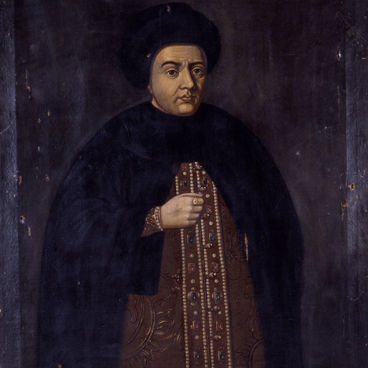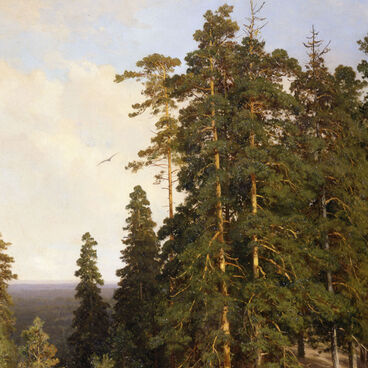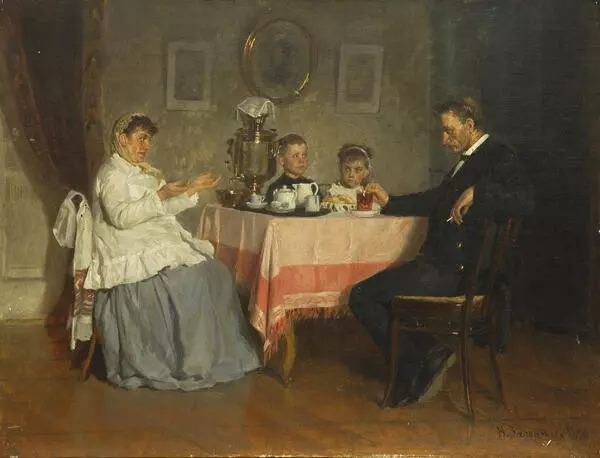In the 60s of the 19th century, it was typical for the art to expose the vice of the society, the artists raised on their canvases important social and public problems. In many ways, the art followed literature, artists were inspired by literary characters of Russian writers – Nikolay Gogol, Ivan Turgenev, Fyodor Dostoyevsky, and others.
Genre art became the leading trend in the art of that period. Artists depicted scenes from everyday life of ordinary people, their contemporaries – urban residents and peasants. Their canvases were distinguished by dynamics and naturalness, truthfulness and realism. The subjects reflected the formed style of life – human relations, labor and leisure, customs and mores. The artists were rather interested in the subject and contents of the piece than the solution of artistic tasks. The consequence of such approach was an emphasis on the narrative and descriptive aspects often resulting in a disregard for the artistic form. Compassion for the characters – humiliated and insulted, deprived and homeless – became the main motive of painting.
Canvas Court of Arbitration in Province depicts a merchant and peasants coming to an official to resolve a conflict that has arisen between them. In the spring, the merchant gave these peasants grain to saw. But the agreement between them was entered on onerous for the villagers conditions which they could not fulfill. The officer sitting at the table is supposed to solve their conflict. The painter’s artistic manner is grotesque, awkward, deliberately primitive and almost crude.
The canvas author is genre and portrait artist Nikolay Zagorsky. Initially, when the painting was received at the museum, the canvas author was not known. It became possible to learn his name after the painting was reproduced in the World Illustration magazine edition of 1880.
Nikolay Zagorsky’s name was famous among genre artists of the last third of the 19th century. He studied in the Emperor’s Academy of Arts, his canvases were regularly displayed at academic exhibitions. Nikolay Zagorsky was awarded the small gold medal for his painting David Plays the Harp In Front of Saul. Beside genre painting, he created portraits, worked as an illustrator.
Genre art became the leading trend in the art of that period. Artists depicted scenes from everyday life of ordinary people, their contemporaries – urban residents and peasants. Their canvases were distinguished by dynamics and naturalness, truthfulness and realism. The subjects reflected the formed style of life – human relations, labor and leisure, customs and mores. The artists were rather interested in the subject and contents of the piece than the solution of artistic tasks. The consequence of such approach was an emphasis on the narrative and descriptive aspects often resulting in a disregard for the artistic form. Compassion for the characters – humiliated and insulted, deprived and homeless – became the main motive of painting.
Canvas Court of Arbitration in Province depicts a merchant and peasants coming to an official to resolve a conflict that has arisen between them. In the spring, the merchant gave these peasants grain to saw. But the agreement between them was entered on onerous for the villagers conditions which they could not fulfill. The officer sitting at the table is supposed to solve their conflict. The painter’s artistic manner is grotesque, awkward, deliberately primitive and almost crude.
The canvas author is genre and portrait artist Nikolay Zagorsky. Initially, when the painting was received at the museum, the canvas author was not known. It became possible to learn his name after the painting was reproduced in the World Illustration magazine edition of 1880.
Nikolay Zagorsky’s name was famous among genre artists of the last third of the 19th century. He studied in the Emperor’s Academy of Arts, his canvases were regularly displayed at academic exhibitions. Nikolay Zagorsky was awarded the small gold medal for his painting David Plays the Harp In Front of Saul. Beside genre painting, he created portraits, worked as an illustrator.




